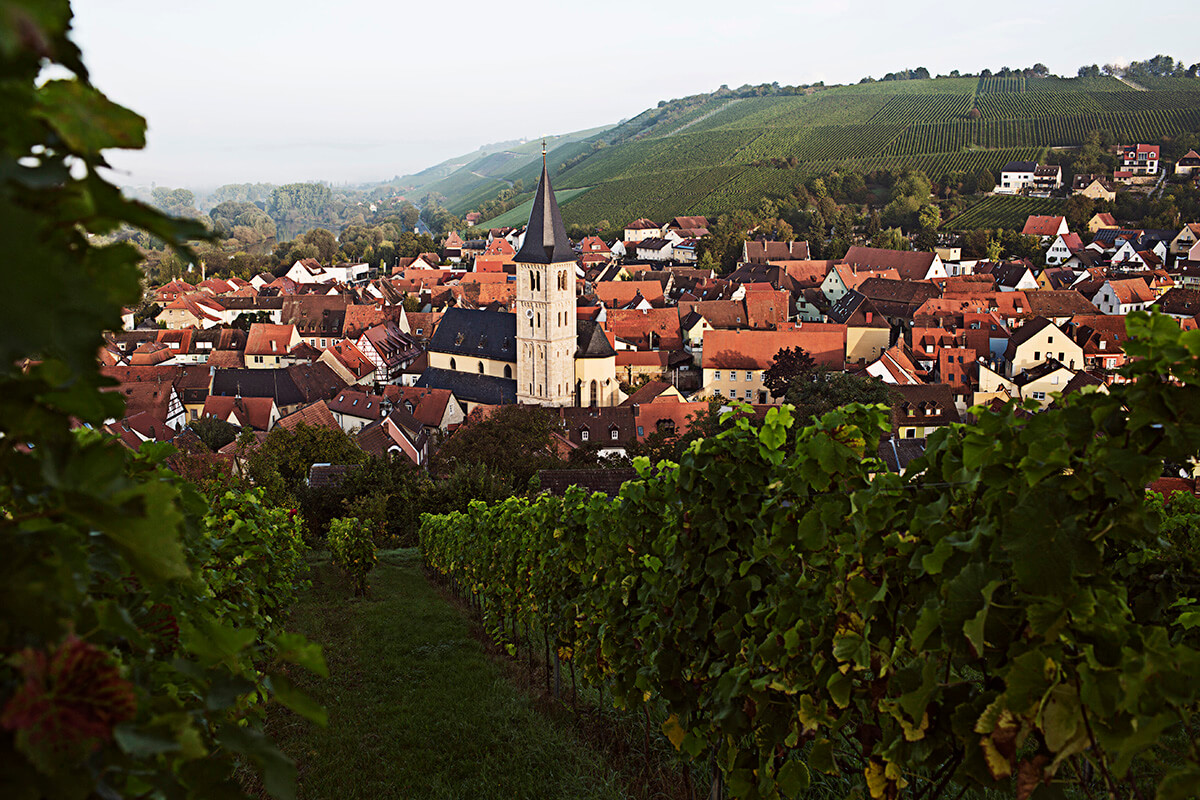Introduction
The finest Franken wines are traditionally bottled in a Bocksbeutel, a squat green or brown flagon with a round body and short neck, which lends considerable recognition value to the region’s wines.
Würzburg is home of the famed vineyard Stein, which gave rise to the generic term Steinwein, formerly used to denote all Franken wines. Franconian wines are generally fuller-bodied, less aromatic, often drier, firmer, and earthier.
Statistics
Major Town: Würzburg
Districts: 3
Collective Sites: 21
Individual Sites: 255
Vineyard Area: 6,130
Terroir
Climate
– Continental
– Dry, warm summers
– Dry, cold winters
– Frost-free growing season, which can last between 160-190 days
Part of Franken wines’ singular personality is due to the climate: cold winters, high annual rainfall, early frosts. Long, warm autumns are rare. As a result, the late-ripening Riesling plays a minor role.
Soil
Weathered, primitive rock and colored sandstone in the Spessart Hills north of Miltenberg. Shell-limestone predominates in the central district, while heavier gypsum and keuper soils are found further east, near the Steiger Forest.
Top soil types:
Weathered rock
Colored sandstone
Shell-limestone
Gypsum
Keuper
Marll
Terrain
Franken lies east of the Rhine and in close proximity to Frankfurt, in Bavaria, with most of the vineyards planted on the hillysouth-facing slopes lining the Main River and its tributaries. Franken is bordered by the Rhön Hills in the north, the Steiger Forest in the east, the Tauber River Valley in the south, and the Spessart Hills in the west.





